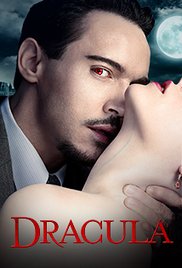The “Uncanny” – Sigmund Freud 1919
By reading the opening chapters of Bram Stoker’s Dracula in light of Freud’s “The Uncanny”, the reader gains new insight into what exactly made this novel so riveting upon its release. Specifically, looking at which parts of the opening narrative foreshadow the uncanny terror instilled by Dracula becomes clearer when using Freud’s understanding of the uncanny. Freud immediately distinguishes what stirs this uncanny fear, noting that while it is always evoked by an unfamiliar element, the novel and strange aspect is never sufficient on its own to define the uncanny. Instead, after much examining of Hoffman’s works and Schelling’s definition, comes to regard the uncanny as: “…in reality nothing new or foreign, but something familiar and old—established in the mind that has been estranged only by the process of repression… the uncanny as something which ought to have been kept concealed but which has nevertheless come to light” (Freud, 13). Freud associates this repression of “which ought to have been kept concealed” with all manner of sexual oppression and childhood trauma, and yet we can tweak it only just so to fit the context of Dracula.
Right from the first page, Jonathan Harker mentions how he researched the country of Transylvania at the British Museum in order to become familiar with the area. Immediately, Stoker establishes the idea that Harker should have some sort of established knowledge of his destination- he describes the countries location among other nations, some of it’s anthropological history, and so on. However, when it comes to the location of Castle Dracula, Harker reaches a dead end. Despite all of his research into the country, Dracula’s estate remains a mystery to him, as he can find naught but the nearby post town of Bistritz. With this deficiency of information even in one of the most complete repositories of knowledge in the British Empire, Stoker plants the idea that the strange new locale of Dracula’s castle is unfamiliar, and yet should not be so unknown. Without even realizing it, the reader begins to not only realize the mystery surrounding the castle, but more importantly, realizes that this should be known information- could it have been concealed in some way. Through this simple hesitation, often brushed away by readers, Stoker also introduces the ever present supernatural element of the Gothic, laying a groundwork for his eventual grander supernatural occurrences.
The unknown surrounding Dracula’s castle is not enough for Stoker though. When Harker first describes his host’s physical appearance in his journal, the description is rife with uncanny references most would prefer to ignore. Published merely a year before, HG Wells’ The Island of Dr Moreau left Victorian readers with a whole slew of questions regarding the differences between humans and animals, and the danger and visceral horror possible where the line between the two could be blurred. It is with these already held beliefs that Stoker introduces his world renowned bestial monster- Dracula himself.
Scattered through the first paragraph of Dracula’s aesthetic are numerous references to animal appearance, mostly dealing with the profusion of hair so common to wolves- “bushy hair”, “heavy moustache”, to name a few. This excess of hair, combined with the thin, harshly defined facial deatures (from his thin nose to his firm and thin cheekbones), rests atop a broad and powerful frame, creating a feral looking powerful man, with “astonishing vitality in a man of his years” (Stoker, 21). Moving away from his exaggerated facial and bodily features, Harker touches upon a series of bestial characteristics, which serve to drive the final nail into the coffin of Dracula’s humanity. Harker highlights, of course, the trademark sharp teeth, elongated fingers, and pointed nails of the vampire image, as well as the nausea Dracula evoked in Harker. More important than reaffirming what present day readers associate with vampires, however, are the hands of Dracula, specifically the hairs grouped in the center of his palms- a trait typically associated with werewolves. Stoker plays with the feral nature of folklore werewolves and vampires to great effect here, by placing these easily recognized traits in Count Dracula. Vital to this decision is the well established tradition of these beasts being almost entirely members of lower classes. Vampires traditionally came from the downtrodden and untitled members of society, with the aristocratic nobles rarely, if ever, being cast in these roles. Vampires were not new to the audiences of the time, even if they were an unfamiliar character, separate from the reader’s humanity. This deficiency of noble vampires made people aware of this familiar void. And with this awareness, a sense of the uncanny began to emerge. Not only did readers begin to question their own humanity in light of these bestial traits (so soon after the vivisection in Dr Moreau), noble vampires like Dracula would also give them reason to wonder after this void. Why were there so few noble vampires? What other secrets could this ever so respectable societal sect keep hidden? Are these bestial trends and traits restricted to Moreau’s beastfolk and feral vampires, or do all people carry within them this feral taint? Questions such as these begin to bubble under the surface of uncanny terror, forcing readers to wonder what about these figures caused their unfamiliar appearance to feel so familiar- what could possibly have been concealed for them to feel this way?
